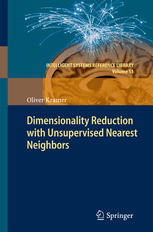

Most ebook files are in PDF format, so you can easily read them using various software such as Foxit Reader or directly on the Google Chrome browser.
Some ebook files are released by publishers in other formats such as .awz, .mobi, .epub, .fb2, etc. You may need to install specific software to read these formats on mobile/PC, such as Calibre.
Please read the tutorial at this link: https://ebookbell.com/faq
We offer FREE conversion to the popular formats you request; however, this may take some time. Therefore, right after payment, please email us, and we will try to provide the service as quickly as possible.
For some exceptional file formats or broken links (if any), please refrain from opening any disputes. Instead, email us first, and we will try to assist within a maximum of 6 hours.
EbookBell Team

4.1
50 reviewsThis book is devoted to a novel approach for dimensionality reduction based on the famous nearest neighbor method that is a powerful classification and regression approach. It starts with an introduction to machine learning concepts and a real-world application from the energy domain. Then, unsupervised nearest neighbors (UNN) is introduced as efficient iterative method for dimensionality reduction. Various UNN models are developed step by step, reaching from a simple iterative strategy for discrete latent spaces to a stochastic kernel-based algorithm for learning submanifolds with independent parameterizations. Extensions that allow the embedding of incomplete and noisy patterns are introduced. Various optimization approaches are compared, from evolutionary to swarm-based heuristics. Experimental comparisons to related methodologies taking into account artificial test data sets and also real-world data demonstrate the behavior of UNN in practical scenarios. The book contains numerous color figures to illustrate the introduced concepts and to highlight the experimental results.